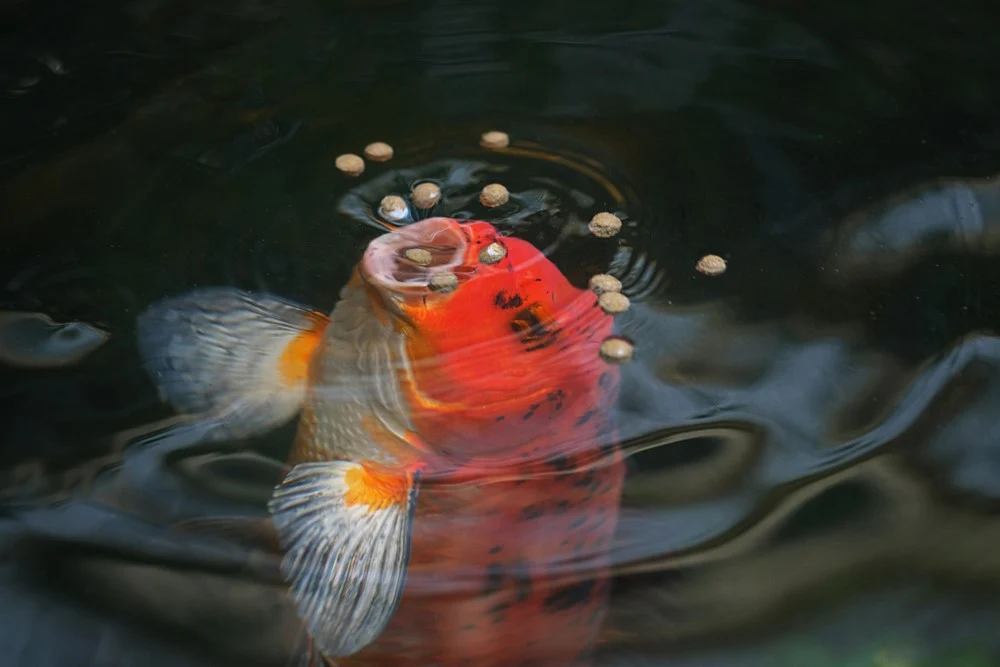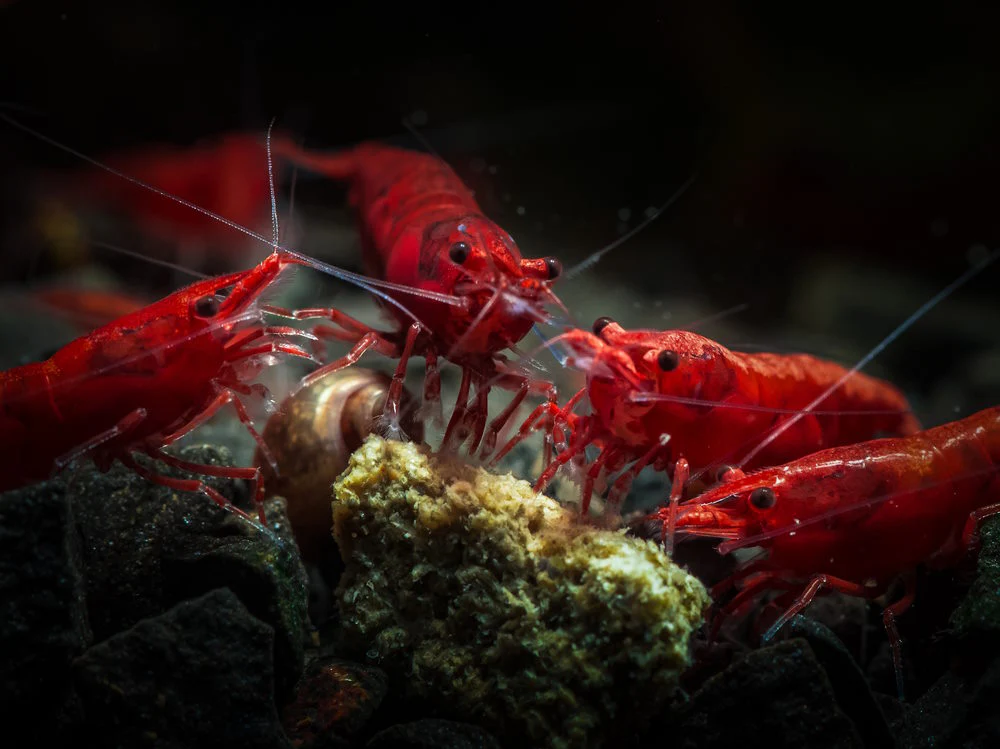Navigating the pet store’s fish food aisle can be a daunting task, especially for beginners. With countless brands and types on the shelves, how can you be sure you’re choosing the right one? Many new fishkeepers simply grab a jar with a picture of their fish on the front, overlooking the fact that fish, like all living creatures, have preferences when it comes to taste, ingredients, and food form. Even the most expensive, high – quality brands might be spurned by picky fish if they don’t meet their needs. Let’s explore the various types of fish foods available to fishkeepers and the fish species they’re best suited for.
Dry, Prepared Fish Foods
Flake Foods
Flake foods are a pet store staple, popular for their affordability and wide – ranging usability. They float on the water’s surface, ideal for top – dwelling fish, and then gradually sink, making them accessible to midwater and bottom – dwelling species. They can be easily crumbled into smaller pieces, perfect for baby fry and nano fish. Available in a multitude of varieties, these flakes can satisfy the dietary needs of carnivores, omnivores, and herbivores. However, their thin and soft texture means they can quickly disintegrate in water, which might not be suitable for slow – eating or constantly grazing fish.

Pellet Foods
Pellets are another essential fish food, coming in floating, slow – sinking (or semi – floating), and sinking versions to accommodate fish that swim at different levels in the aquarium. Their firm and compact nature ensures they don’t dissolve instantly in water. But this also makes them harder to break into smaller pieces, so it’s crucial to select the right size that your fish can swallow whole. Have you ever seen a betta fish repeatedly eat and then spit out its food? It could be that the pellet is too large for it to gulp down. Some popular pellet options include community fish pellets, nano pellets for tiny fish, floating betta fish pellets, monster pellets for large fish, and koi food.

Wafers and Sticks
Wafers and sticks are designed to dissolve slowly in water, making them a great choice for fish that like to graze over several hours. They’re also suitable for larger fish that can take bigger bites. Depending on your fish’s eating habits, you might choose floating sticks for an oscar or sinking sticks for plecos. Similar to most dry foods, wafers and sticks contain a blend of meat and vegetable matter. Even algae wafers, which are rich in spirulina, seaweed, and plant ingredients, still have proteins.

Freeze – Dried Foods
Freeze – dried foods mainly consist of a single protein source, such as bloodworms, daphnia, and tubifex worms, which are natural prey for fish in the wild. The freeze – drying process preserves the food’s nutritional value and original appearance, making it an enticing treat for your fish. These invertebrates are often gut – loaded with healthy foods and multivitamins before freeze – drying. For example, you can choose between regular freeze – dried brine shrimp and spirulina – fed brine shrimp. Since most of the moisture has been removed, freeze – dried foods tend to float on the surface and can be crumbled for easier consumption. They also have the advantage of being storable on a shelf at room temperature, unlike many live or frozen foods.

Powdered Foods
Powdered foods are primarily used for feeding baby fish, shrimp, tiny nano fish, and filter – feeding shrimp. The advantage of powdered foods is that they disperse throughout the tank, allowing fry to feed without leaving the safety of their hiding spots. The key is to avoid overfeeding by providing multiple small meals throughout the day to keep their tiny stomachs full. If you’re concerned about water quality due to uneaten powder, adding snails and shrimp as clean – up crew can help, as they’ll gobble up any remaining crumbs. Some popular powdered foods include Hikari First Bites and Easy Fry and Small Fish Food.

Gel Fish Foods
Gel food, popularized by companies like Repashy Ventures, is a unique addition to the fishkeeping hobby. You mix the powder with hot water, and it hardens into a jello – like consistency. This sinking food remains solid underwater for up to 24 hours without clouding the tank, making it an excellent choice for plecos, slow – eating fish, and aufwuchs grazers (animals that feed on algae, zooplankton, and biofilm on surfaces). Its softness and easy digestibility make it suitable for goldfish, and you can pour the liquid gel onto hardscape or decorations for otocinclus and other catfish to scrape off with their suckermouths. Repashy gel food comes in multiple flavors for specialized diets, and you can even add other ingredients like medication or pureed vegetables.

Frozen Fish Foods
Frozen fish food is a great option as it closely mimics what fish eat in nature. Like freeze – dried foods, they are made from whole ingredients that were gut – loaded with nutritious foods and then flash – frozen to retain nutrients and taste. They don’t dissolve quickly in water and sink to the bottom of the tank. At your local fish or pet store’s freezer, you can find a variety of sizes, from baby brine shrimp to bloodworms to silversides. These meaty foods are excellent protein sources, and frozen crustaceans like daphnia and brine shrimp have hard – to – digest exoskeletons that act as fiber, aiding in the fish’s digestive process. Frozen foods usually come in frozen slabs or sheets of individual cubes. However, for monster fish with large appetites, like stingrays and arowana, owners often buy human – grade seafood from grocery stores, such as frozen cocktail shrimp, fish filets, and prawns. Pufferfish also need crunchy clams and oysters to file down their constantly growing teeth.

Live Fish Foods
Many fishkeepers believe that live foods are among the best options. They provide hunting enrichment for fish, and the movement of live prey entices underweight or growing fish to eat more. Live foods are also often used to condition aquarium fish for breeding. Similar to frozen foods, they don’t create a lot of mess in the aquarium. Live foods can include worms, insects, and other creatures, and they vary in size, care requirements, and availability. Some, like blackworms and mealworms, can be bought at local fish and reptile stores, while others, like micro worms and vinegar eels, can be cultivated at home. Baby brine shrimp are a popular live food choice as the eggs can be stored in the fridge or freezer and hatched within 24 hours when needed, with no regular upkeep required.

Specialty Fish Foods
Vegetables and Plant – Based Foods
Some fish need a diet rich in algae and plant – based foods. You can supplement their diet with human – grade vegetables. For example, canned green beans are great for raising baby plecos, canned carrots can enhance the redness of cherry shrimp, and blanched zucchini slices are suitable for otocinclus catfish. Catappa leaves (Indian almond leaves) are beneficial for baby shrimp and fry as they can graze on the biofilm that grows as the leaves decompose. Excess floating plants or trimmings from a planted tank can be given to goldfish or Mbuna cichlids. Saltwater fishkeepers know that plain, dried seaweed sheets are a great treat for herbivorous fish like mollies.

Mineral – Enriched Foods
Calcium and other essential minerals are crucial for the healthy growth of livebearers, strong shell development in snails, and proper molting in shrimp. Look for calcium – enriched pellets such as Hikari Fancy Guppy, Xtreme Shrimpee Sticks, and Hikari Crab Cuisine. If you’re worried about slow – moving snails being outcompeted during feeding, Nano Banquet Food Blocks, which stay stable in water for hours, are a good option.

Wood – Eating Fish Foods
Clown plecos and royal plecos are among the few wood – eating catfish in the aquarium trade. However, they can’t survive on wood alone and need additional foods. Researchers believe these fish are actually consuming the microorganisms, algae, fungus, and biofilm on the rotting wood rather than the wood itself. Since most of the fibrous wood is excreted as waste, high – fiber foods containing wood products, like Sera Catfish Chips, Xtreme Sinking Wafers, and Repashy Morning Wood gel food, are recommended.
Why Won’t My Fish Eat This Food?
Food Preferences
Fish have their own likes and dislikes. Sometimes, a fish food that’s marketed for a specific species or is popular among other fishkeepers might not be well – received in your tank. If this happens, try mixing the new food with a known favorite and keep offering it over time to see if your fish will adapt.
Food Freshness
Check the age of the fish food. Many dry foods have long expiration dates, but once opened, exposure to moisture and oxygen can cause degradation. Stale or spoiled food can lead to fish rejecting it or even getting sick. To keep the food fresh, avoid putting wet fingers in the container, squeeze out air from resealable bags, keep containers closed when not in use, and consider storing dry fish foods in the fridge or freezer. Aquatic veterinarians recommend using flakes, pellets, and other prepared foods within the first six months after opening to avoid health issues.
Food Addiction
Fish can become “addicted” to a specific live or frozen food and start rejecting other foods they previously ate. Offering a diverse range of foods is essential to ensure your fish get all the necessary vitamins, minerals, and nutrients. For example, if your discus only eat frozen bloodworms, mix pellets or freeze – dried foods with the bloodworms and gradually increase the proportion of dry food until they accept it. Fasting your fish for 2 – 7 days can also make them more willing to try new foods.

Special Feeding Requirements
For oddball fish with special feeding needs that limit food variety, don’t forget to add vitamin drops and other supplements to their meals. Nutrient – deficient fish have weakened immune systems and are more likely to get sick.
Feeding fish is one of the most enjoyable aspects of fishkeeping. We hope this guide to different fish foods inspires you to experiment and provide the best diet for your aquatic pets. For more ideas on expanding your fish’s diet, check out our top 5 high – quality foods that we love to feed.




